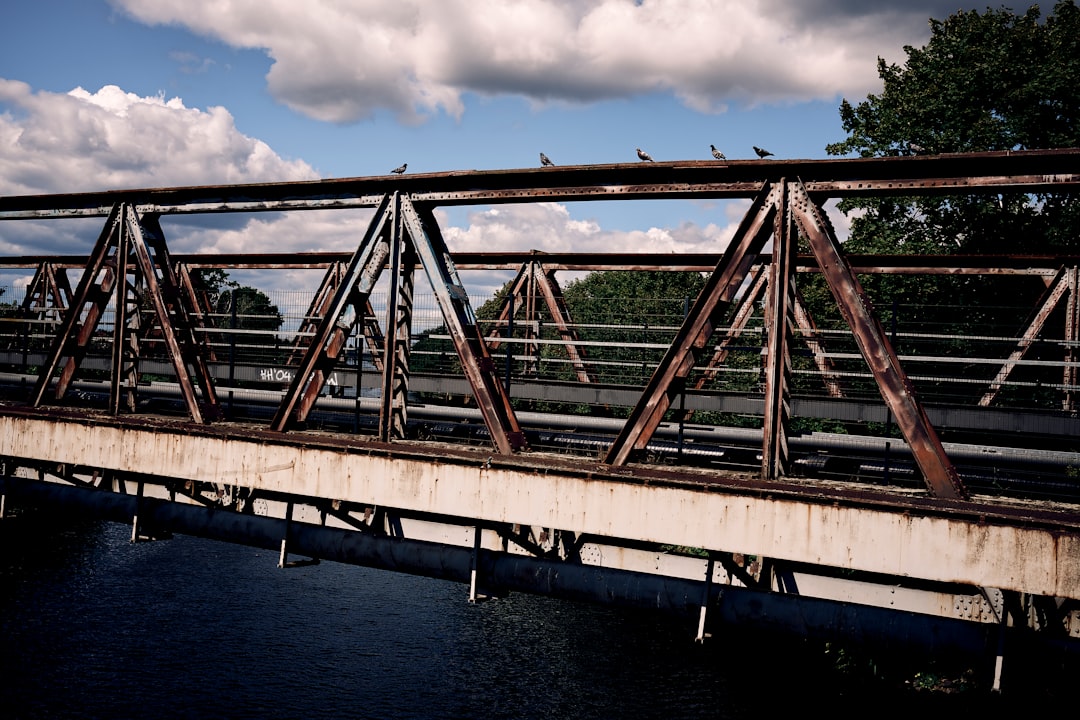Steel bridges, majestic symbols of engineering prowess, grace landscapes worldwide. Their design is a complex interplay of structural engineering, material science, and construction expertise. This comprehensive guide delves into the key aspects of designing these impressive structures, offering insights into the process from initial concept to final construction.
1. Understanding Load Calculations: The Foundation of Steel Bridge Design
Before a single steel beam is fabricated, a thorough understanding of the loads a bridge will endure is paramount. This involves considering various factors, including:
- Dead Loads: The weight of the bridge itself, including the deck, beams, columns, and other structural elements.
- Live Loads: The weight of vehicles, pedestrians, and other moving loads traversing the bridge. Design codes specify minimum live load requirements based on anticipated traffic volume and type.
- Environmental Loads: These include wind loads, snow loads, ice loads, and seismic loads. The geographical location significantly influences the magnitude and type of environmental loads considered.
- Impact Loads: Dynamic forces generated by moving vehicles, especially heavier ones, adding to the overall stress on the structure.
- Thermal Loads: Expansion and contraction of steel due to temperature fluctuations. Expansion joints and careful design are crucial to accommodate these changes.
Accurate load calculations are crucial for determining the required strength and size of the structural members, ensuring the bridge’s long-term stability and safety.
2. Material Selection: Choosing the Right Steel for the Job
Steel’s versatility makes it a preferred material for bridges, but the selection process is crucial. Various grades of steel exist, each with unique properties:
- Yield Strength: A measure of the stress at which the steel begins to deform permanently. Higher yield strength implies greater load-bearing capacity.
- Tensile Strength: The maximum stress the steel can withstand before breaking.
- Ductility: The ability of the steel to deform plastically before fracturing, offering some level of redundancy in case of overload.
- Weldability: Crucial for joining steel members. Certain steel grades are more easily welded than others.
- Corrosion Resistance: Factors like weathering steel (Corten steel) offer superior resistance to corrosion, minimizing maintenance requirements.
The choice of steel grade depends on factors like the bridge’s span, anticipated loads, environmental conditions, and cost considerations. Engineers carefully balance these factors to optimize the design.
3. Structural Analysis: Ensuring Bridge Stability and Strength
Sophisticated structural analysis techniques are employed to ensure the bridge’s stability and strength under various load combinations. These techniques include:
- Finite Element Analysis (FEA): A powerful computational method that divides the bridge into smaller elements, allowing for precise stress and deflection calculations.
- Linear and Non-Linear Analysis: Linear analysis assumes a proportional relationship between load and deformation, while non-linear analysis accounts for more complex material behavior.
- Dynamic Analysis: This considers the effects of dynamic loads, such as earthquakes and moving vehicles, on the bridge’s response.
- Stability Analysis: Evaluates the bridge’s resistance to buckling and other instability phenomena.
The results of structural analysis guide the design of the bridge’s various components, ensuring that they can withstand the anticipated loads without failure.
4. Fabrication and Construction: Bringing the Design to Life
The fabrication process involves cutting, shaping, and welding steel members according to the design specifications. Precise fabrication is critical to ensure the structural integrity of the bridge. Advanced techniques such as:
- CNC machining: Offers high precision and efficiency in cutting and shaping steel members.
- Automated welding systems: Ensure consistent weld quality and speed up the fabrication process.
- Quality control inspections: Rigorous inspections at each stage of fabrication are essential to identify and rectify any defects.
Construction involves transporting and assembling the fabricated components on-site. Careful planning and execution are crucial for efficient and safe construction, often involving specialized heavy lifting equipment and skilled crews.
5. Design Considerations for Sustainability and Aesthetics
Modern steel bridge design goes beyond mere structural functionality; it incorporates sustainability and aesthetics. This involves:
- Material Efficiency: Optimizing the design to minimize steel usage without compromising strength or safety.
- Lifecycle Assessment: Considering the environmental impact of the bridge throughout its entire lifecycle, from material extraction to demolition.
- Aesthetic Design: Integrating the bridge seamlessly into its surroundings while creating a visually appealing structure.
- Accessibility: Designing for pedestrian and cyclist access, enhancing the bridge’s usability and integration with the community.
By incorporating these considerations, engineers can create steel bridges that are not only structurally sound and efficient but also environmentally responsible and aesthetically pleasing.
Designing steel bridges is a complex and challenging endeavor, requiring a deep understanding of engineering principles, material science, and construction techniques. However, the resulting structures stand as testaments to human ingenuity and engineering excellence.
Tags: Steel Bridge Design, Bridge Engineering, Structural Engineering, Steel Construction, Civil Engineering




